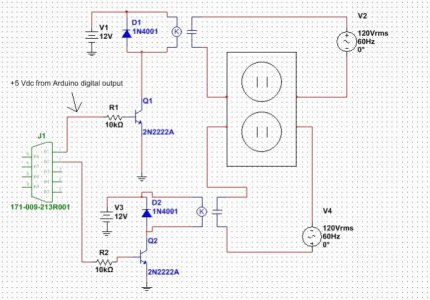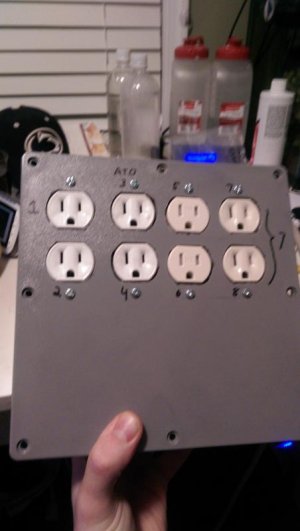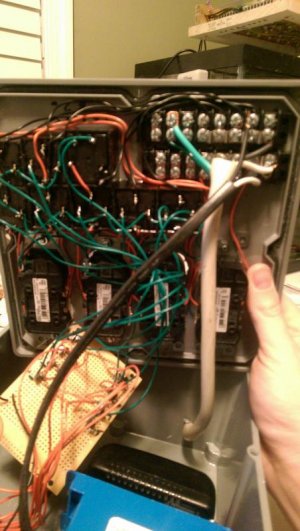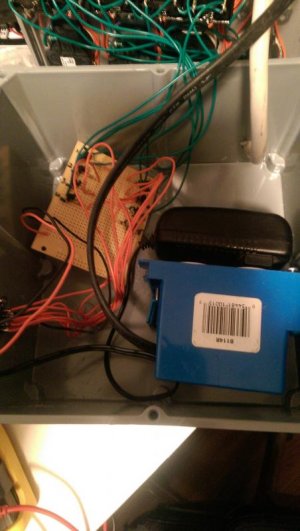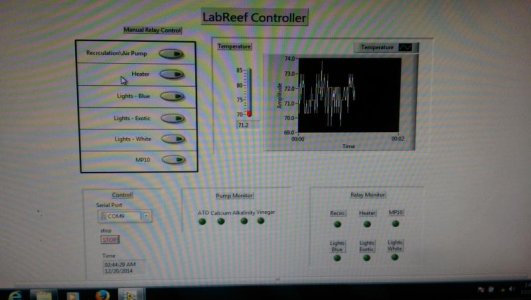I've decided to undertake an arduino based aquarium controller. It's a lofty project as I don't have a background in programming. I had to take an introductory C++ class for my BSEET degree and I have some familiarity with LabView and LabView CVI from work, but that's about it.
A professor at my school sells Arduino Uno boards to students for $10 apiece, so I figured I'd take him up on it.
Here's my desired functions:
- ATO
- Temp controller
- Doser
- Electrical equipment control
- light timer
- PH monitor
The ATO is going to be totally DIY using ebay float switches. 1 to turn on and off, the other to cut power to the pump regardless of the state of the main switch in the event of a stuck closed scenario.
The temp controller is going to be just that. It'll use a temp probe to monitor temp and control the heater via the electrical panel.
The Doser is also going to be DIY utilizing eBay dosing heads.
The light timer will control my LED array. It's merely a timer for now because the drivers I'm using are cheap (maxwellen) and don't support PWM or 0-10 Vdc tuning. I thought about designing a resistor array with a few mux chips to step up and down the light intensity, but I don't think the benefits of a gradual change in lighting, if there are any, are worthwhile.
The dosing heads, float switches, 16x2 I2C LCD display, RTC and temp probe are all in the mail. I'm currently using a crude sketch to turn an aqualifter on and off for ATO. Crude, because I'm using "delay" for timing. It turns on for 15 seconds every hour and outputs the calculated time to the serial port. Obviously, the RTC is a much better solution to timing events as it frees up the processor for other tasks.
The serial port is currently monitored and logged using PuTTy on an old laptop with a broken backlight. I can't see anything but I've set it up so I can access it with remote desktop from my desktop PC. The laptop is powered on, connected to wireless, and stashed in a desk drawer with the screen closed. I may just end up keeping it that way so I can easily interface with the Arduino without purchasing any additional shields.
A professor at my school sells Arduino Uno boards to students for $10 apiece, so I figured I'd take him up on it.
Here's my desired functions:
- ATO
- Temp controller
- Doser
- Electrical equipment control
- light timer
- PH monitor
The ATO is going to be totally DIY using ebay float switches. 1 to turn on and off, the other to cut power to the pump regardless of the state of the main switch in the event of a stuck closed scenario.
The temp controller is going to be just that. It'll use a temp probe to monitor temp and control the heater via the electrical panel.
The Doser is also going to be DIY utilizing eBay dosing heads.
The light timer will control my LED array. It's merely a timer for now because the drivers I'm using are cheap (maxwellen) and don't support PWM or 0-10 Vdc tuning. I thought about designing a resistor array with a few mux chips to step up and down the light intensity, but I don't think the benefits of a gradual change in lighting, if there are any, are worthwhile.
The dosing heads, float switches, 16x2 I2C LCD display, RTC and temp probe are all in the mail. I'm currently using a crude sketch to turn an aqualifter on and off for ATO. Crude, because I'm using "delay" for timing. It turns on for 15 seconds every hour and outputs the calculated time to the serial port. Obviously, the RTC is a much better solution to timing events as it frees up the processor for other tasks.
The serial port is currently monitored and logged using PuTTy on an old laptop with a broken backlight. I can't see anything but I've set it up so I can access it with remote desktop from my desktop PC. The laptop is powered on, connected to wireless, and stashed in a desk drawer with the screen closed. I may just end up keeping it that way so I can easily interface with the Arduino without purchasing any additional shields.

